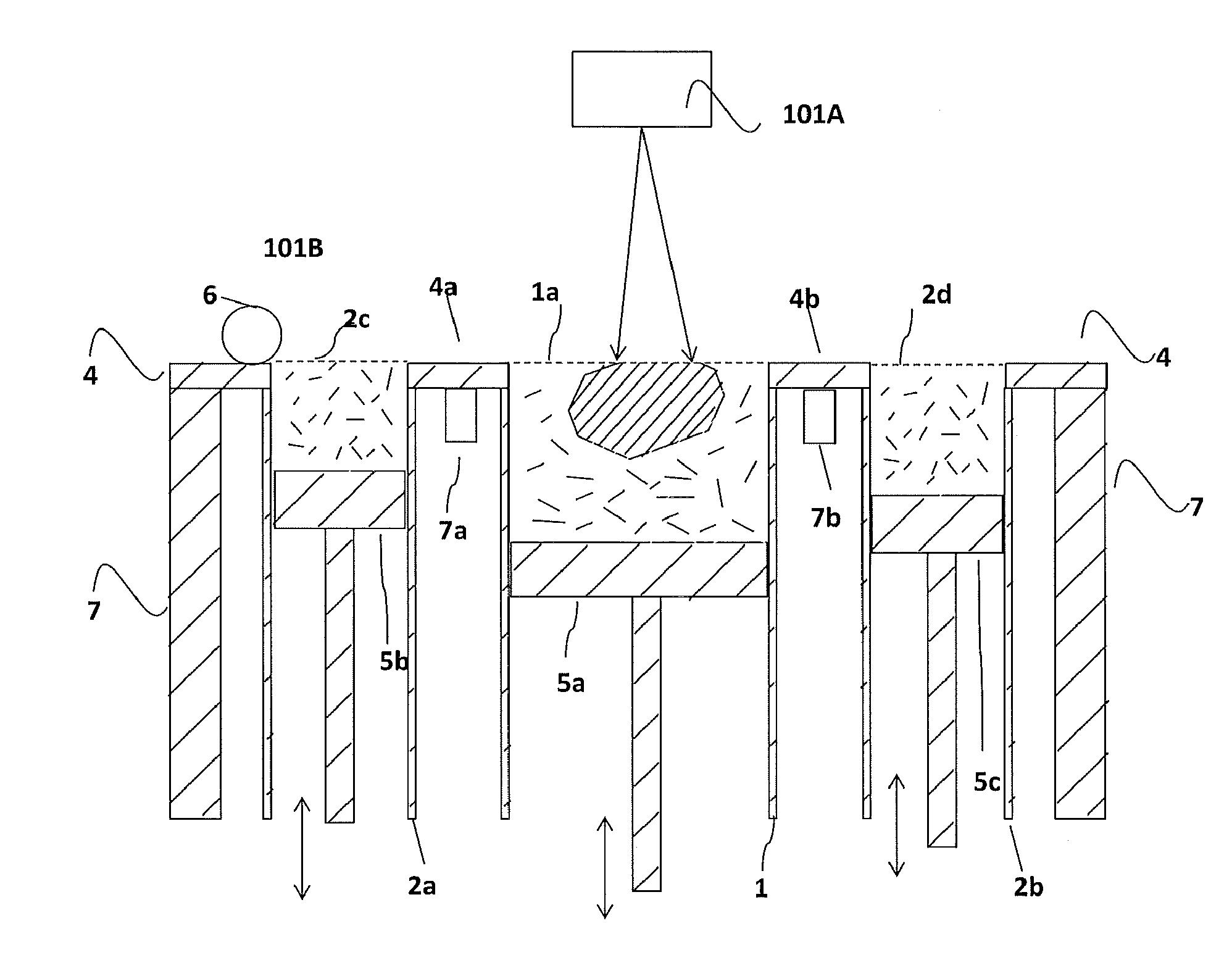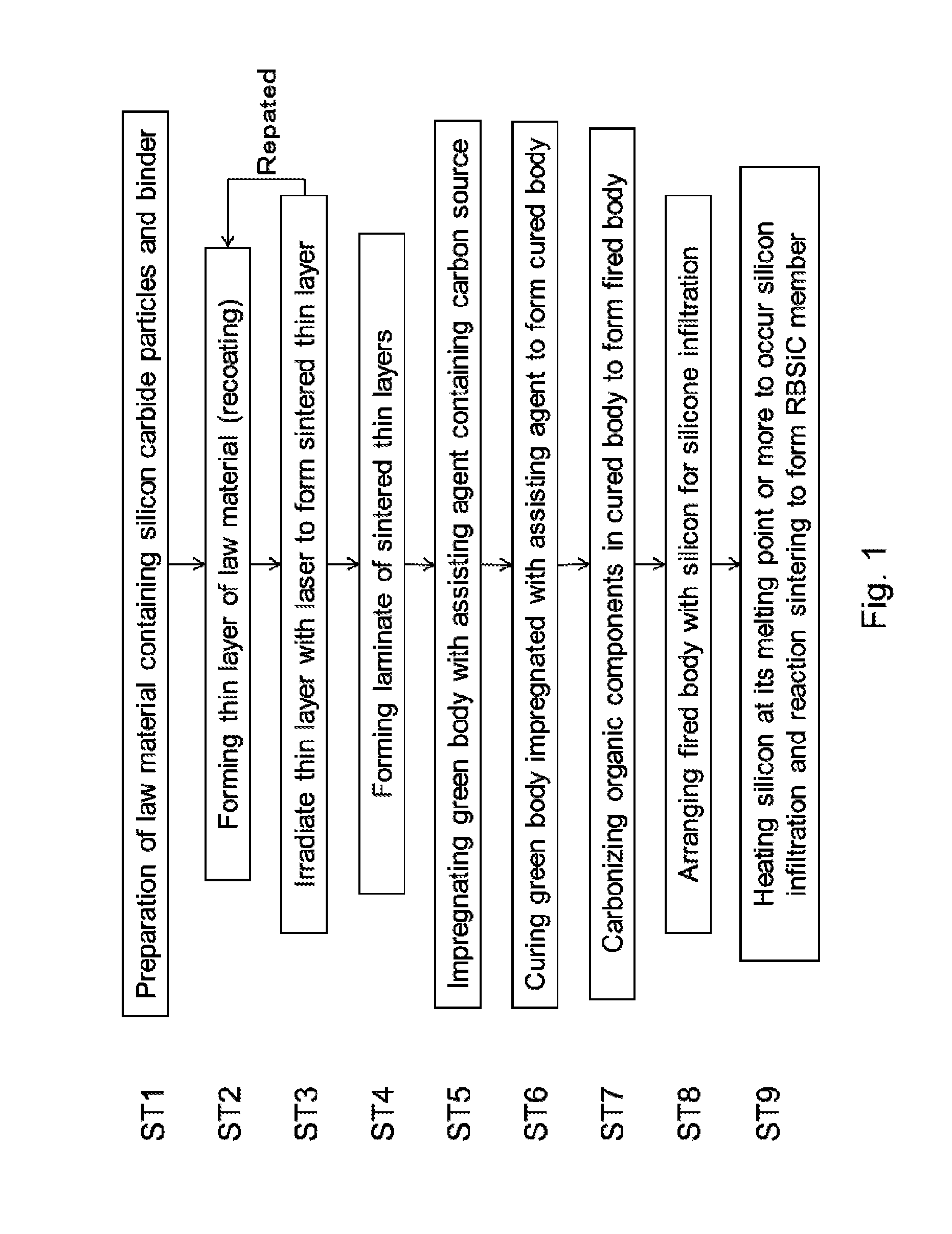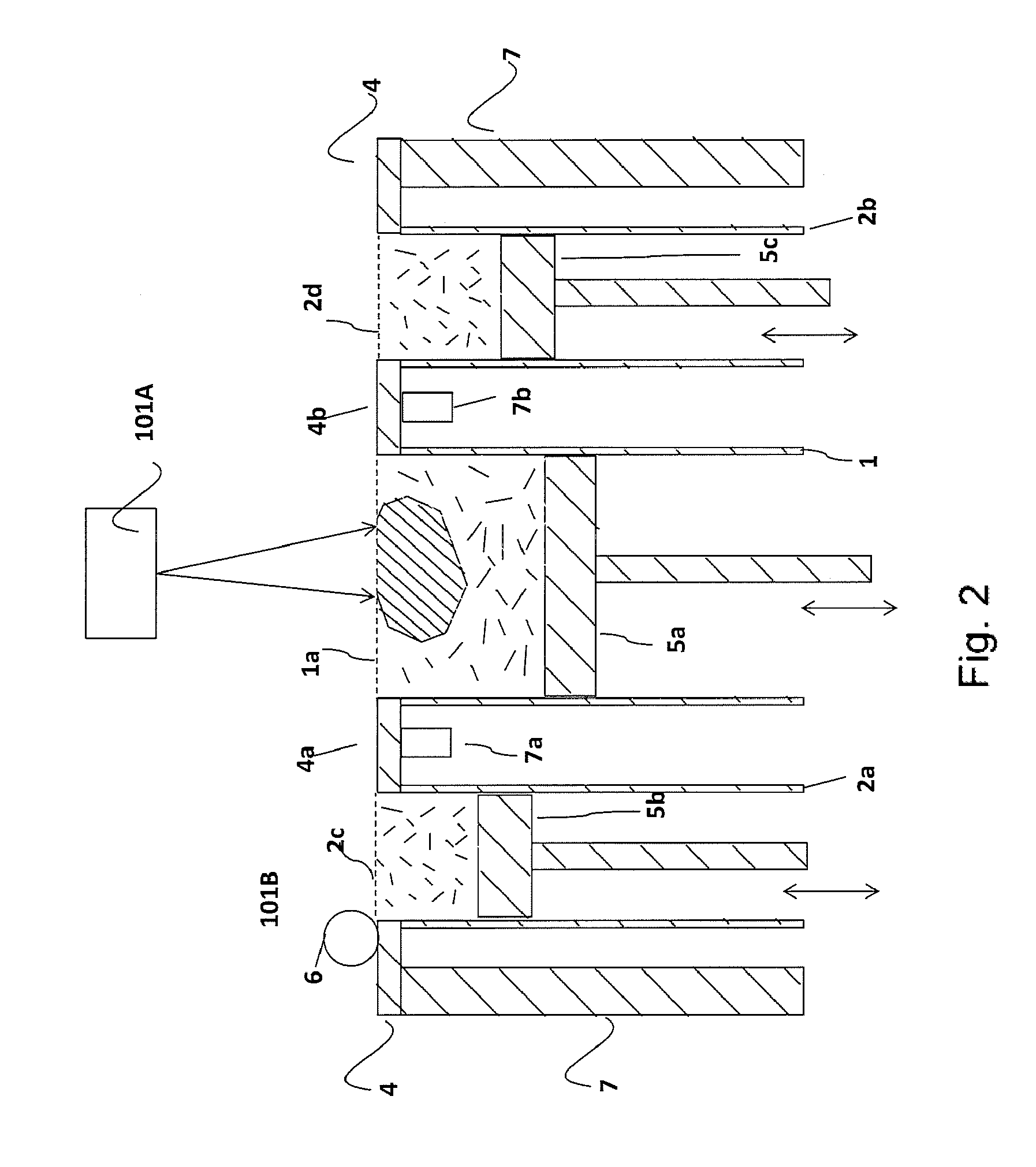Process for producing reaction bonded silicon carbide member
a technology of reaction bonding and silicon carbide, which is applied in the direction of additive manufacturing processes, electric/magnetic/electromagnetic heating, manufacturing tools, etc., can solve the problems of low silicon carbide filling rate, poor handling of silicon carbide green body, and low silicon carbide in the green body. , to achieve the effect of satisfactory amount of silicon, excellent ceramic properties, and high porosity
- Summary
- Abstract
- Description
- Claims
- Application Information
AI Technical Summary
Benefits of technology
Problems solved by technology
Method used
Image
Examples
example 1
Preparation of Raw Material
[0108]Silicon carbide (SiC) having a mean particle diameter of 30 μm and nylon 12 having a mean particle diameter of 10 μm were provided for use in a raw material. The silicon carbide powder and nylon 12 were weighed so that the weight ratio (silicon carbide powder:nylon 12) was 100:1. The mixed powder (10 kg) was introduced into a plastic pot, followed by dry stirring mixing for 2 hr or longer to give a raw material.
[0109]Preparation of Green Body
[0110]A powder lamination-type 3D forming apparatus (SEMplice300, manufactured by Aspect) was used as a SLS apparatus. A predetermined amount of the raw material thus obtained was introduced and evenly filled into a raw material vessel. Subsequently, the raw material vessel filled with the raw material was set in an apparatus body, and nitrogen was introduced into a forming chamber. Further, a thin layer of the raw material was previously formed in a predetermined thickness on a forming table within a forming cha...
example 2
[0124]A RBSiC member was prepared in the same manner as in Example 1, except that the raw material was obtained at a weight ratio of silicon carbide powder to nylon 12 of 100:3. Further, in the same manner as in Example 1, silicon on the surface of the RBSiC member was removed to give a desired shape, followed by various evaluations.
example 3
[0125]A RBSiC member was prepared in the same manner as in Example 1, except that the raw material was obtained at a weight ratio of silicon carbide powder to nylon 12 of 100:10. Further, in the same manner as in Example 1, silicon on the surface of the RBSiC member was removed to give a desired shape, followed by various evaluations.
PUM
| Property | Measurement | Unit |
|---|---|---|
| Fraction | aaaaa | aaaaa |
| Percent by mass | aaaaa | aaaaa |
| Time | aaaaa | aaaaa |
Abstract
Description
Claims
Application Information
 Login to View More
Login to View More - R&D
- Intellectual Property
- Life Sciences
- Materials
- Tech Scout
- Unparalleled Data Quality
- Higher Quality Content
- 60% Fewer Hallucinations
Browse by: Latest US Patents, China's latest patents, Technical Efficacy Thesaurus, Application Domain, Technology Topic, Popular Technical Reports.
© 2025 PatSnap. All rights reserved.Legal|Privacy policy|Modern Slavery Act Transparency Statement|Sitemap|About US| Contact US: help@patsnap.com



